"Kutsak" Kotin
Fast alternative for IP
At first, there was no talk of upgrading the KV-1. According to the draft resolution of the State Defense Committee “On the release of IS tanks and self-propelled artillery mounts at the Kirov NKTP plant”, the production of KV-1s was terminated since June 1943. ChKZ was to switch completely to the production of SU-152, in June it was planned to build 200 of these SAUs, and in July - 100. Also SU-122 should have been built here (in this case, it was about an ACS with an X-NUMX-mm A-122 gun). Since July, the production of these machines also ceased, instead of them, ChKZ was supposed to build on 19 EC-50 and IMS-1 / ISC-152.
This version of the decree was rejected; instead, on May 5, a decree of the State Defense Committee No. 3289 “On reinforcing artillery armament of tanks and self-propelled guns” was signed. According to him, by July 1 1943, two samples of the EC-1 and KV-1 with 85-mm guns were issued for state tests. Preliminary design work on the 85-mm guns, which were launched at the end of March 1943, showed that its installation would require significant changes in the design of the tank.
Installing the D-5T-85 in the IC tower
The design of the 85-mm tank gun with the 52-K anti-aircraft cannon ballistics went on a competitive basis. In Kaliningrad, near Moscow, the team of the Central Artillery Design Bureau (TsAKB) was engaged in this. They took the path of minimal changes in the design of the chassis, which greatly accelerated the introduction of improved tanks in the series. The tower was reworked, thanks to which the working conditions for the calculation were improved.
The staff of the design office of the plant No. XXUMX (Sverdlovsk) looked at this topic in a completely different way. Their development was created with the expectation of a serious alteration of the chassis of both tanks, especially with regard to the EC-9. In the course of designing the installation of the D-1 gun, later renamed the D-7T-5, it became clear that it could not be installed in the existing EC-85 tower, primarily because of the diameter of the turret chase. The first draft of the D-1T-5 installation assumed that the diameter of the tower shoulder strap would increase to 85 mm. Toward the end of May 1700, it became clear that the shoulder strap should be increased even more - to 1943 mm. Of course, this led to a serious alteration of the EC-1800 chassis, but they were ready for a similar turn of events in Chelyabinsk. In any case, the EC-1 was remade, and Chelyabinsk and Sverdlovsk designers did not plan to develop two different towers for one gun.
The same system on top. Due to the compact design in combination with a wider shoulder strap of the tower, the working conditions of the crew were better than in the KV-1
The first moves in the project, which received the drawing index 239, began in mid-May, 1943. Since July, this topic has received the name Object 239. The draft design was ready for 22 May 1943, the project’s lead engineer was M.F. Balgi In addition to the expansion of the shoulder strap, a number of other changes were made to the corps. The radio operator from the control department was removed, the radio moved to the tower, and the fuel tanks were transferred to the forward part of the hull. According to calculations, the combat weight of the tank increased to 46,5 tons. Deputy Commissar of the Tank Industry and Chief Designer of ChKZ Joseph Yakovlevich Kotin was determined to continue the development of this tank, but for the time being avoided publicity of this decision. Nevertheless, the management of NKTP insisted on the manufacture of a prototype. We decided to use the second model KV-1 with the 15002 serial number as the basis for creating a new machine. According to the original plan, the production time of the 239 Object was determined on June 25.
The working drawings of the “10 version with installation of an IP tower” were prepared and put into operation by the 1 of June. At that time, it was planned to use the F-85 system, which is C-31, as the work on the D-5T-85 was delayed. The attitude to the installation of the 85-mm gun in the KV-1 with eloquently speaks this passage from the report on the experimental work:
“It should be noted that, both at Kirovsky and at plant No. XXUMX, work on upgrading the weapons of the KV-100 tank is in turn following the tank EC-1. After the manufacture of parts and assemblies for the EC-2, all attention is paid to, appropriate attention will be paid to the above works. ”
239 object. Chelyabinsk, end of July 1943 of the year
In reality, the factory workers did not manage to invest in the deadlines not only for the 239 Object, but also for the main job - EC-3, aka 237 Object. The fault of the Kirovsky Plant (ChKZ), which, according to the senior military representative of the plant No. XXUMX, withdrew from work, the tower was never completed for any of the tanks. As for the chassis, the first 100 Object was completed by June 30.
In parallel, Plant No.200 completed the reworking of the KV-1 case with the 15002. Metamorphosis was not very big. As planned, the shooter-radio operator on this tank was refused, because the department had to be re-assembled. The ball mount of the course machine gun was brewed, and the machine gun itself was moved to a fixed installation to the right of the driver. Due to the increase in the diameter of the shoulder strap to 1800 mm, I had to redo the under-turret box. On the sides appeared characteristic protrusions. Also to protect the shoulder strap in the bow of the bump appeared. Finally, I had to redo the roof over the driver. As the tower increased, the driver lost the hatch: he now had to climb out and get inside through the tower. As compensation, the driver received periscopic MK-IV devices, which improved visibility.
The welded machine gun and periscopic devices are clearly visible above the driver's access hatch.
By July 11, Plant No.100 assembled a chassis, fuel tanks, a motor and control drives at the 239 Facility. The tower was still not ready. In addition to the work of the Kirov factory, the problem was that the D-5T-85 system existed at that time in a single copy. It was supposed to be installed in the tower of the first sample of the 237 Object, which was fully completed on July 8. The tower for the new tank did not arrive at Plant No.100 and by July 20. Without waiting for its manufacture, the plant completed the assembly of the chassis, which by this day has already passed 40 kilometers. Interestingly, the first sample of the D-5T-85 still turned out to be exactly in the tower of the 239 Object, which was installed on the tank at the end of July.
Alterations increased the combat weight of the tank to 46 tons
The towers of the 237 Object and the 239 Object were absolutely identical. The difference in the combat mass of tanks looks interesting: the first prototype of the 237 Object weighed a little more than 43,2 tons, and the 239 Object - almost 46 tons. At the same time, the upgraded KV-1с was significantly inferior to its successor in terms of security. However, the 239 Object had its advantages. First, he had a more impressive ammunition - 70 cartridges for D-5T against 59 for 237 Object and 55 for 238 Object (KV-1s with standard turret and C-31 cannon). Secondly, no matter how good the future EC-85 would be, but it took time to organize its production. And the Red Army needed a tank capable of fighting the Tigris now. The need for such a machine increased dramatically after the Battle of Kursk died down, in which the very low effectiveness of 76-mm tank guns against the new German tanks was once again confirmed.
Same tank from behind
Short-term tests showed that an increase in combat mass influenced the dynamic characteristics of the 239 Object. The average speed on the highway fell to 16,4 km / h, and along the country road to 15,48 km / h. Fuel consumption increased to 409 liters per 100 kilometers. But the chassis overload did not happen. The temperature of the engine coolant in summer conditions did not exceed 85 degrees, and the oil - 78 degrees. Some reduction in combat performance was not critical. The verdict of the commission was as follows:
Modifications to the hull turned out to be insignificant, which made it possible to quickly launch the mass production of such tanks instead of the KV-1.
“The KV-85 tank (KV-1 tank with a partially modified hull and an IS tank tower mounted on it) the Commission considers it possible to recommend for release instead of KV-1 tanks, until serial development of the IS tanks.”
The final choice in favor of the 239 Object was made during the tests that took place at the Gorokhovetsky Artillery Scientific Test Proving Ground (ANIOP) from 21 to 24 August 1943. Even before the shooting, it was clear that the D-5T was clearly superior to C-31. The recoil length of the cannon was only 240-300 mm, maintenance of the recoil devices was more convenient. The 237 Object Tower was much more convenient for calculating work, which was manifested during the rate of fire tests. For an 239 Object, this parameter is 10-13 shots per minute, 2 times as many as the 238 Object.
Tests of the 239 Object at the Gorokhovetskiy ANIOP. End of August 1943 of the year
Tests at the Gorokhovetsky ANIOP turned out to be, rather, the final test. The fact is that 8 August 1943 of the year, Stalin signed the decree of the State Defense Committee No. 3891ss "On the production of KV tanks with 85 mm cannon (KV-85)". According to this document, the choice was made in favor of the 239 Object, in August the release of the first 25 tanks was expected. The advantages of the D-5T were demonstrated in early August during the testing of prototype SU-85. Despite the fact that the D-5C-85 installed in SU-85-II had a lot of minor flaws, it turned out to be better than the CACB development systems.
239 object after shelling, November 1943 of the year
The 239 Object tests did not end there. First, the car passed, according to the decision of the commission, life tests. Then in November 1943, the car participated in the tests, which directly affected its appearance. The fact is that during the testing of the PT8-15 sight, adopted as the TSH-15, the machine was fired from a ZNS-76 5-mm cannon with both armor-piercing projectiles. The purpose of the attack was to test the strength of the device. The sight of shooting from a distance in 300 meters was not injured, but the tank received a series of damage: the driver's cap was knocked out by a hit and damaged the commander's turret. Ahead of the car and waited for other tests, which will be discussed in another material.
Three nerve months
The volume of production of KV-3891 to 85 of August indicated in the decree of the State Treasury No. 12c was reduced to 22 units. But this rather modest volume was not easy to produce. In August, the plant was required to finish the remaining KV-1s and, more difficultly, to fulfill the plan for the production of X-NUMX-T-325. And this is not counting the SU-34, which at that time had a much higher priority than the KV-152. By August 85 no new tank ChKZ has not yet passed. Delivery took place in an emergency situation, for example, 26 tanks were already taken on August 16. Without a trace of such labor "exploits" have not passed. 31 of August to the GABTU sent a letter to the senior military representative at Chelyabinsk Concrete Plant. He reported that in preparing the drawings, the factory design bureau made a number of mistakes, which resulted in a dozen and a half defects: the fuel tanks were fitted in place, as well as projectile styling with electrical equipment, instead of the “Multi-cyclone” filters, older Vortex tanks were installed, there were large problems with scopes. Plant №31, which did not send cargo with the tools for balancing, made its contribution. Already accepted cars in September had to be redone. As a result, the first 9 tanks were able to ship only by September 5. In total, in September, ChKZ shipped 9 tanks, including August 47 tanks.
Serial Sample HF-85. NIBT Polygon, summer 1944 of the year
Problems with the release of the first serial KV-85 were largely the result of not the most conscientious work of subcontractors. Plant №200 began to supply buildings and towers only from August 23. The plant №9, which submitted the first 3 guns of 28 August, 17 30 units and the last two on the morning of the 31 number, distinguished themselves. In addition to the problems with cargoes mentioned, there were other shortcomings as well, so the systems had to be improved. In September, the situation repeated. As of September 19, all 6 tanks had been commissioned, and by September 24 their number had grown to 13. The plant again had to complete the monthly program in the last days in an emergency manner. Nevertheless, the plan in the 63 machine ChKZ still executed, although not without problems. Were found problems with the mechanisms of guidance guns.
From a technical point of view, the car was slightly different from the prototype
Not the best situation with technical documentation has led to the fact that NKTP and GBTU KA had to intervene. October 6 1943 of the year was adopted the protocol for approval of technical documentation on the HF-85. The GBTU KA did not approve a whole number of drawing groups - installation of tanks, a rotating mechanism of a tower, installation of a tank intercom. A number of groups were approved with comments - for example, the engine's power supply system, the installation of an air filter, the hull, the installation of the D-5T system and a course gun, electric trigger, installation of sights. 20 scored a total of such groups, and some of them belonged to the 237 Object, which, from November 1943, was to change the KV-85. The ChKZ leadership did not agree with all the changes that the GBTU KA required, but the design of the machine was gradually refined.
Due to the short production time, the KV-85 externally from different months of production hardly differed from each other.
The plan for October 1943 of the year was the same as for September - 63 machines. Ongoing problems with affiliates led to a repetition of the August and September situations. The first 3 tanks were delivered only by October 10, by the 17 number their number increased to 7, and by October 22 they managed to hand over the entire 20 KV-85. As of October 31, the 56 machines were ready, the rest were finished using the emergency method. In October, 67 KV-85 left for the troops, the remaining 34 vehicles were shipped in early November.
By this time, the production of the EC-85 was launched at ChKZ, the first such tank was commissioned already on November 5. By the way, it turned out to be a temporary measure, since later the EC-122 (EC-2), which had a more powerful tool D-25Т, was launched into the series.
About KV-85 design engineers remembered not the kindest words. N.F. Shashmurin in his memoirs called this car "Kutsak", hinting at the lack of prospects for this tank. According to him, Kotin promoted her as the most simple version of the development of the KV-1. Of course, the memoirs should be treated with a certain degree of criticism, especially given the difficult relationship between Kotin and Shashmurin, but some documents confirm the words of Nikolai Fedorovich. And the production drama accompanying Kutsak all the time of its release showed that Kotin’s opinion on the modernization of the KV-1s as a simple decision was not entirely correct. Even the presence of a more or less finished chassis did not avoid problems during the transfer of production from the KV-1 to the KV-85. 148 tanks, released for 3 of the month, cost factory workers a considerable amount of nerves.
Limited success
Truly large supplies of KV-85 to the troops began from the end of September 1943. 23 numbers in Kosterevo went to train for the acquisition of 27-th Guards Tank Regiment. Machines were built with the money of rural workers of Chuvashia, and the tanks went to the front as part of the column "The collective farmer of Chuvashia." Also, the KV-85 arrived at the recruitment of 7-th, 14-th, 28-th, 30-th and 34-th Guards Tank Regiments. Structurally, these units were no different from those that had previously been armed with KV-1s. Established structure assumed the presence of a tank in the regiment 21, a similar composition remained unchanged until the end of World War II. From the beginning of 1944, the regiments, armed with heavy tanks, became known as Guards heavy tank regiments.
One of the KV-85 in winter camouflage with traces of active use. Winter 1944 of the year
Mastering new cars went differently. The easiest were those units that had previously fought on the KV-1s. From a technical point of view, the difference between the KV-85 and this tank was small. But the KV-85 got into parts that had previously been used by other tanks. For example, the 34 Guards Heavy Tank Regiment, where the 22 of October 1943 was sent to the 21 tank. The regiment, which by that time was in the Tula training camp, fought on Churchill IV until KV-85. The tankers of this unit had problems with the operation of new tanks, for example, plugging a long barrel of the D-5T into tree trunks was observed. The 34 Guards Heavy Tank Regiment was the first to use the KV-85 at the front.
As is often the case, the combat debut turned out to be ambiguous. November 20 The 1943 of the 28 of the Ukrainian Front entered the 4 of the 34 of the Ukrainian Front. ttp (on KV-85) and 40 th heavy self-propelled artillery regiment (on SU-152). By the morning 8 regiments were on alert. In 9: 40, both regiments received orders: interacting with the infantry of the 9 rifle corps, to break through the enemy defenses and, having captured Malaya Lepetiha, seize the crossing across the Dnieper. The attack involved 20 KV-85 and 9 SU-152. SU-152 went on the attack and, tearing away from the infantry, were on the sights of the German self-propelled units Ferdinand from the 653-th division of tank destroyers. At the same time, the KV-85 attacked, but without the support of the infantry, their attack also proved to be ineffective. 40-th TSAP lost 6 SU-152 padded and 1 burned down, 34-th Guards. TTP lost 9 KV-85, remaining on the territory controlled by the enemy.
This car was hit at the end of the year 1943
The next day, the fighting continued, and in 13: 20 German tanks with the support of Ferdinand went to the counter. SU-152 40-th tsap were distinguished here, who with the return fire destroyed 2 ACS Ferdinand and 3 tank. On the morning of November 22, 1943, as part of 34-th Guards. The milestones were 9-capable HF-85, and in the 40-th TSAP - 5 SU-152 (by the 25 number, the number of the latter increased to 7). By the end of November 29 in 34-th Guards. MTP remained 8 combat-ready KV-85. During the fighting, the regiment destroyed up to 300 soldiers and officers, 2 anti-tank guns, 3 tank and 2 self-propelled units. The regiment's irretrievable losses included the 12 KV-85, another 8 of tanks turned out to be destroyed and evacuated. 16 tank crew killed, 32 went missing, 16 was injured.
SU-152 proved to be more effective: the armed part of them destroyed up to 250 infantrymen, 2 tank, 9 ACS, 18 anti-tank guns, 8 field guns, 10 enemy mortars. Own irrecoverable losses amounted to 4 SU-152, another 6 time SU-152 lined, but they managed to evacuate and put into operation. 8 self-propelled guns were killed, 16 injured.
Given the fact against whom Soviet armored vehicles had to fight, the losses do not look so terrible. It is worth emphasizing that on both sides the data on victories is too high. Among other things, it is also connected with the fact that to destroy and destroy - these are two big differences. This is clearly seen in the number of KV-85 and SU-152, returned to service. The Germans remember only the heavy battles of 26-27 in November, and they allegedly destroyed the 54 of the Soviet tank. Of these, 21 allegedly destroyed the crew of Franz Krechmer. And here the owner of the Iron Cross clearly should have cut his sturgeon. For 26 November, the armored units of the 28 Army lost 8 tanks, of which irrevocably 5, and for 27 the number 25 destroyed and burned. With all the desire to get 54 from 33 does not work.
Trophy KV-85 of the 34-th Guards Tank Regiment, the end of November 1943 year. The machine was used in the 653 division of tank destroyers
It was necessary to fight KV-85 and against the "Tigers". The 7 Guards Tank Regiment KV-85 was sent 28 October 1943. After the re-formation that took place in Tula, the regiment was sent to the 60-th army of the 1-th Ukrainian Front. The regiment went into battle on November 23, literally a few days after the 34 of the Guards. TPP Tankmen had a chance to participate in a defensive operation in the Kiev direction. By December 9, the regiment with a fairly thinned materiel was in the 38 Army. In late January, the regiment remained 9 KV-85.
The high point of these cars came 28 January 1944 of the year. On this day, in 16: 35, a group of 35 German tanks, in cooperation with the infantry, moved towards the state farm named after them. Telman. According to Soviet sources, the SS 1 Panzer Division participated in the attack. The State Farm defended 60 people with two KV-85 and two SU-122 assigned to them under the command of Senior Lieutenant I.L. Podust. According to Soviet data, after three attacks on a state farm, the Germans were short of five Pz.Kpfw.Tiger Ausf.E, two Pz.Kpfw.IV, three Pz.Kpfw.III, seven armored personnel carriers and six anti-tank guns. Seeing that the enemy decided to surround the state farm, Podust led the defenders out of the encirclement. For this fight, he received the Order of the Red Banner.
The crew of the KV-85, commanded by Lieutenant S.I. Kuleshov, who destroyed the Tiger 2 and 1 Pz.Kpfw.IV. When the German infantry attempted to get close to the tanks, Kuleshov’s machine had crushed about 15 people with caterpillars, the rest fled. The award for battle was the Order of the Patriotic War, II degree. Another "Tiger" was on the account of the SU-122, commanded by the Guard Lieutenant V.F. Mikheev.
KV-85 in the Crimea. 1452 sap, May 1944 of the year
The end of 1943 - the beginning of 1944, became the apogee of the combat career of the KV-85. The modest volume of production and heavy losses led to the fact that by the summer of 1944, these machines became very rare. For example, in the spring of 1944, the 11 KV-85 was part of the 1452 th self-propelled artillery regiment, which participated in the liberation of the Crimea. Individual vehicles fought in different parts in the summer and autumn of 1944, but these were the last bursts of combat activity. Alas, not a single serial machine of this type has survived to this day. But the object is preserved 239, standing on a pedestal at Avtovo in St. Petersburg. True, before installing it, "ennobled", welded armored course machine gun.
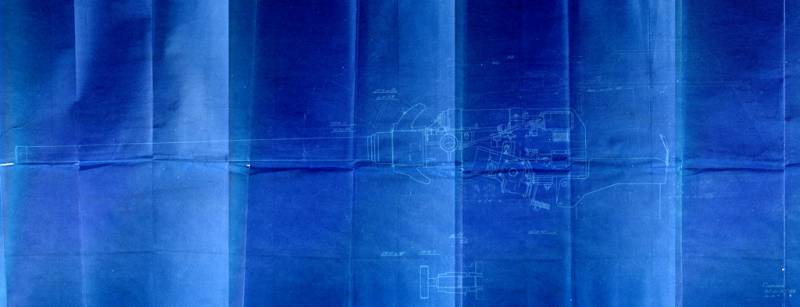
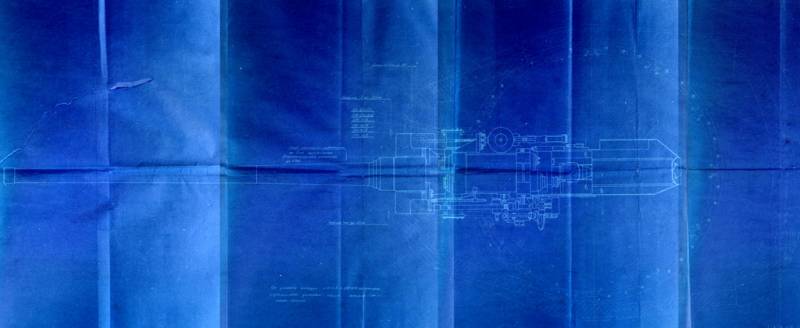
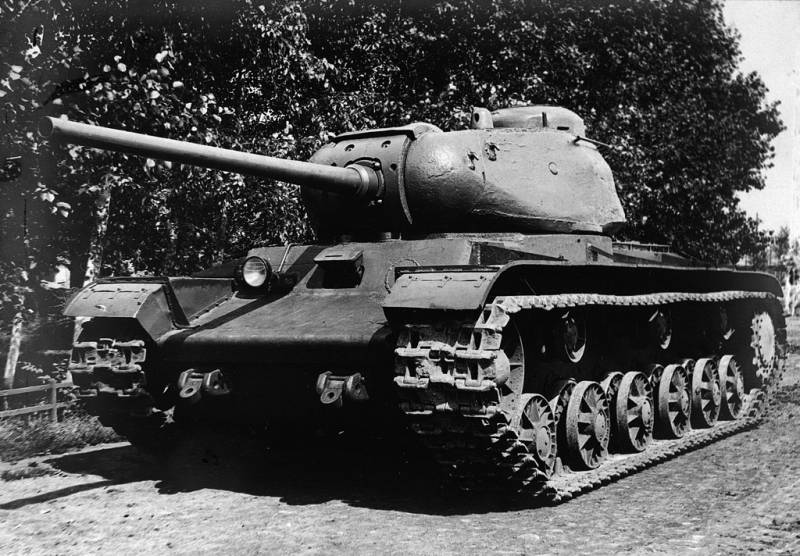
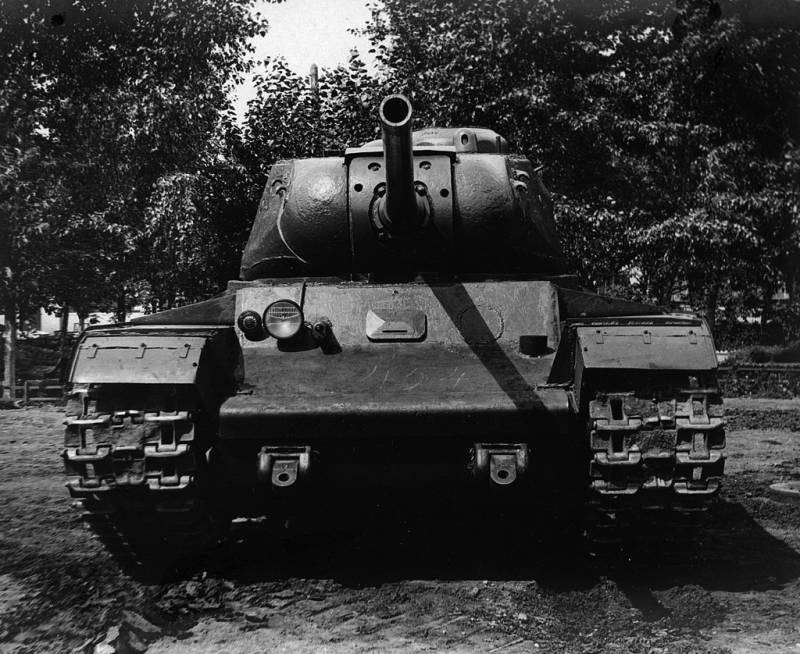
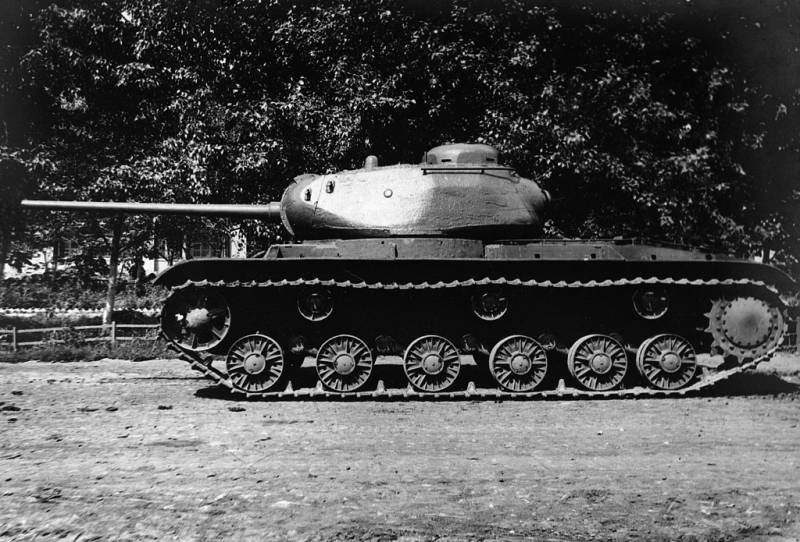
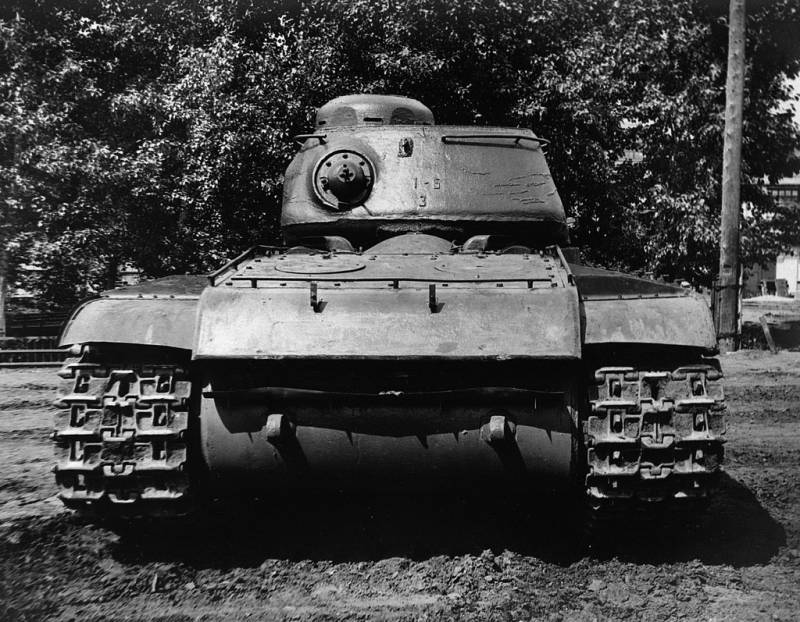
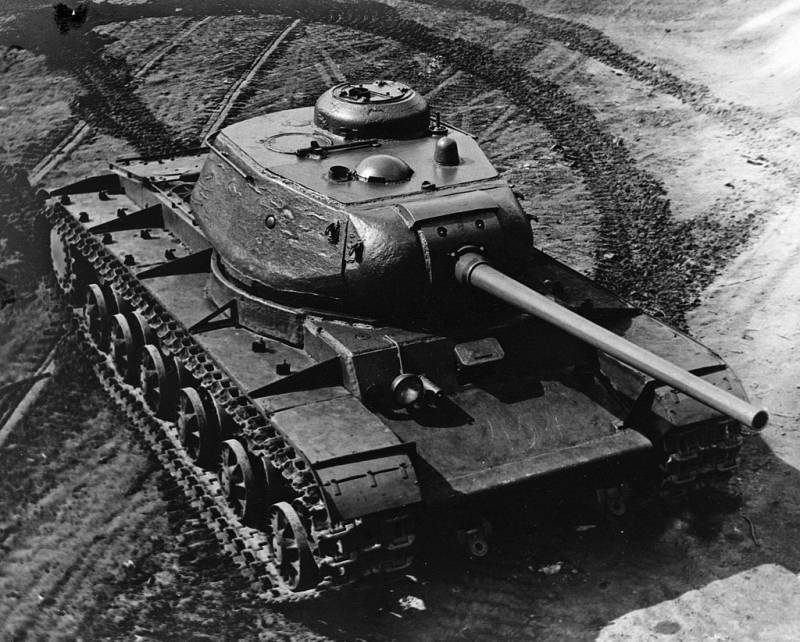
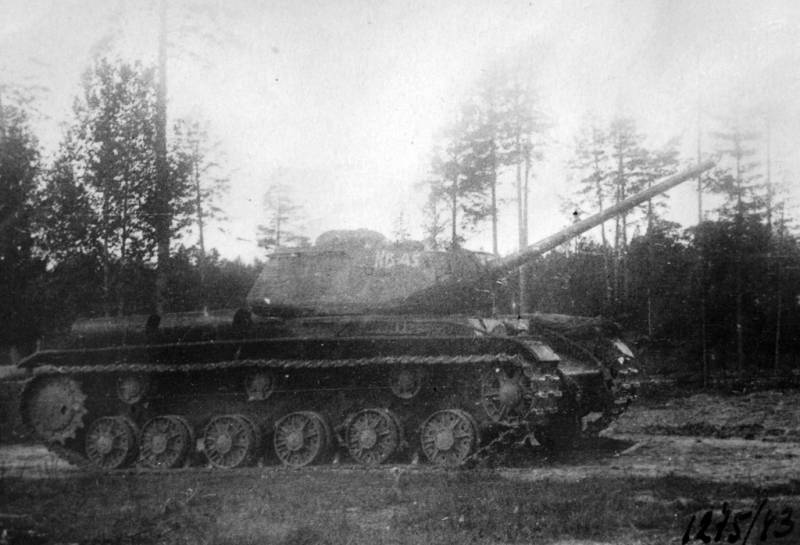
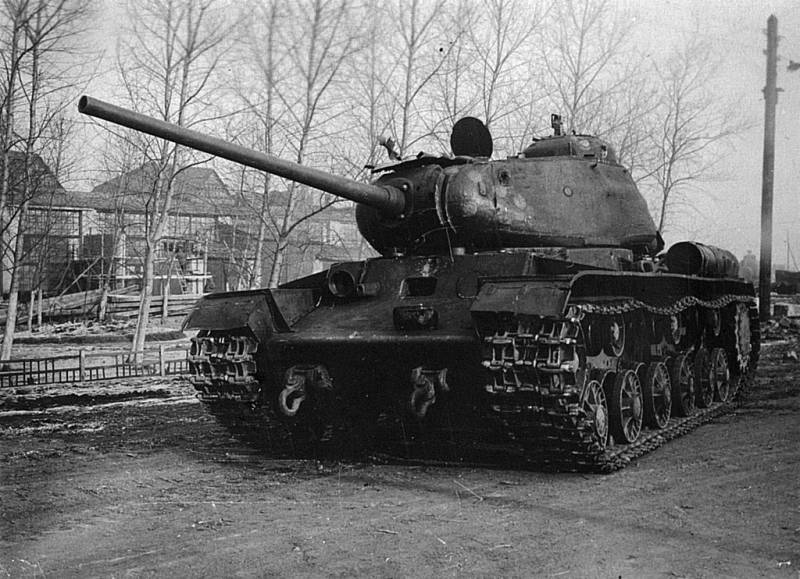
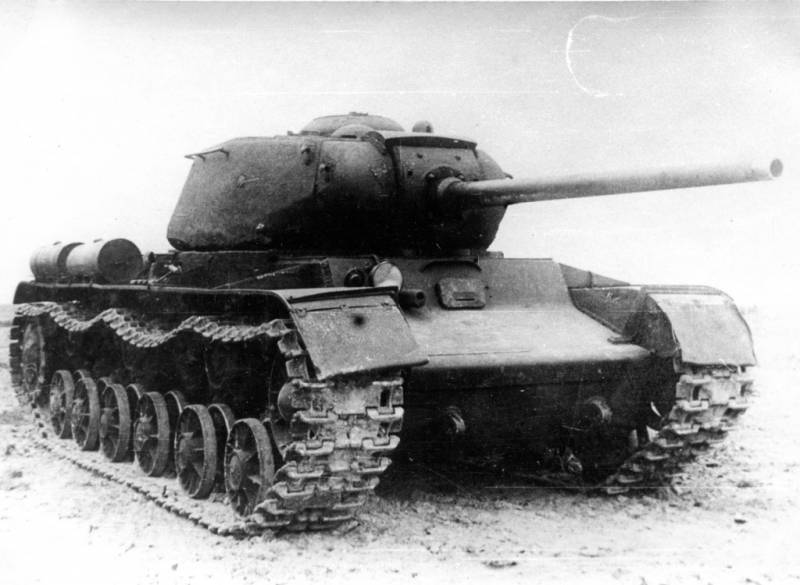
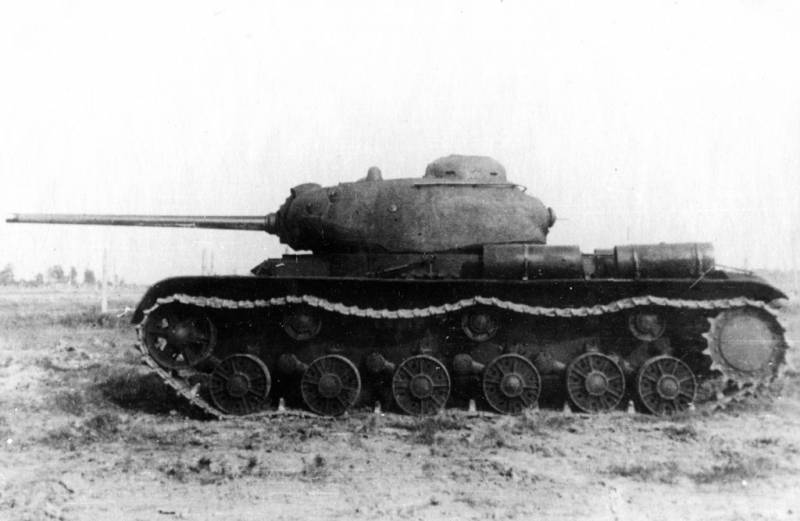
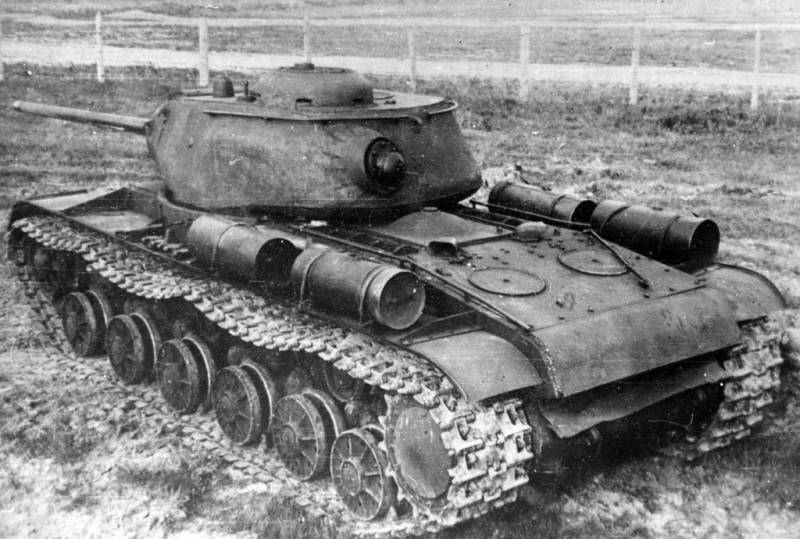
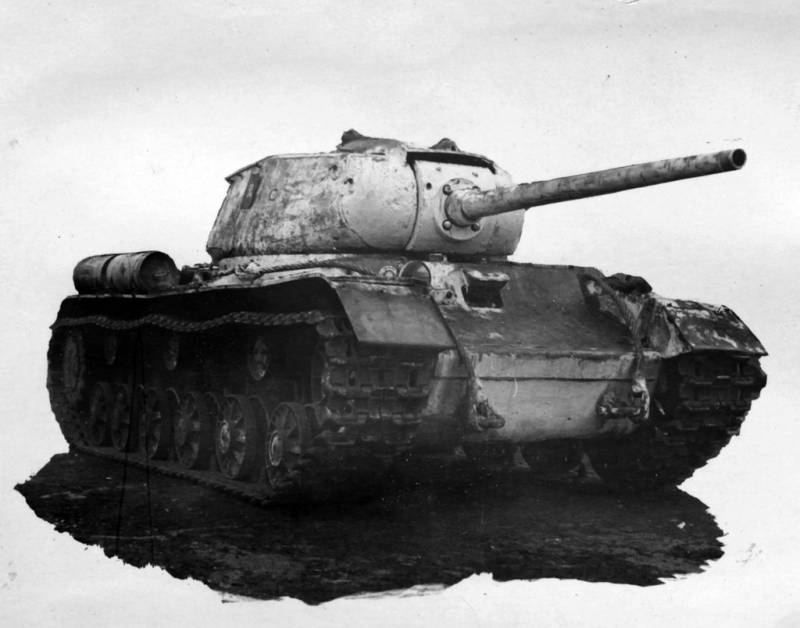
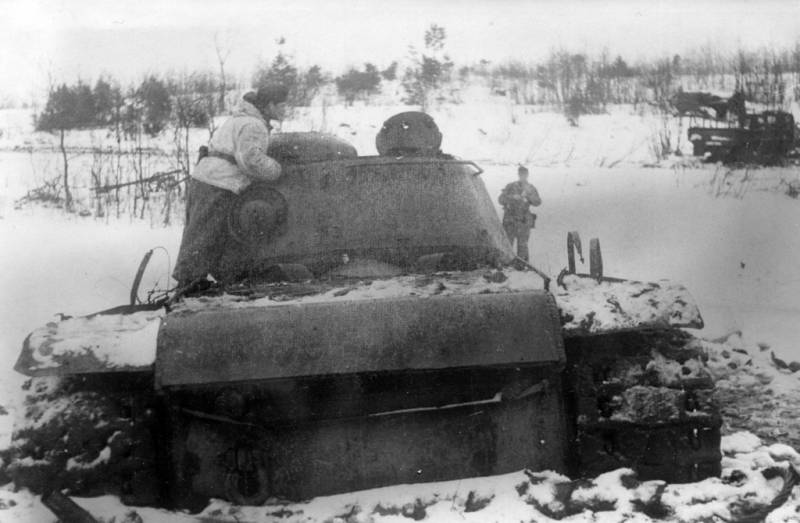
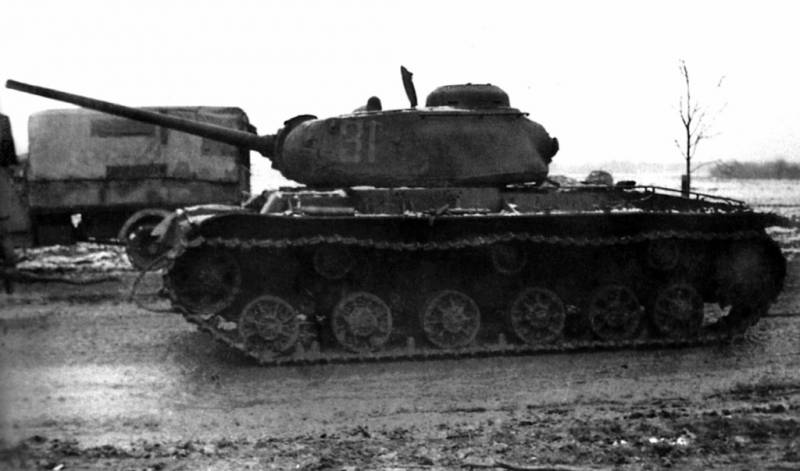
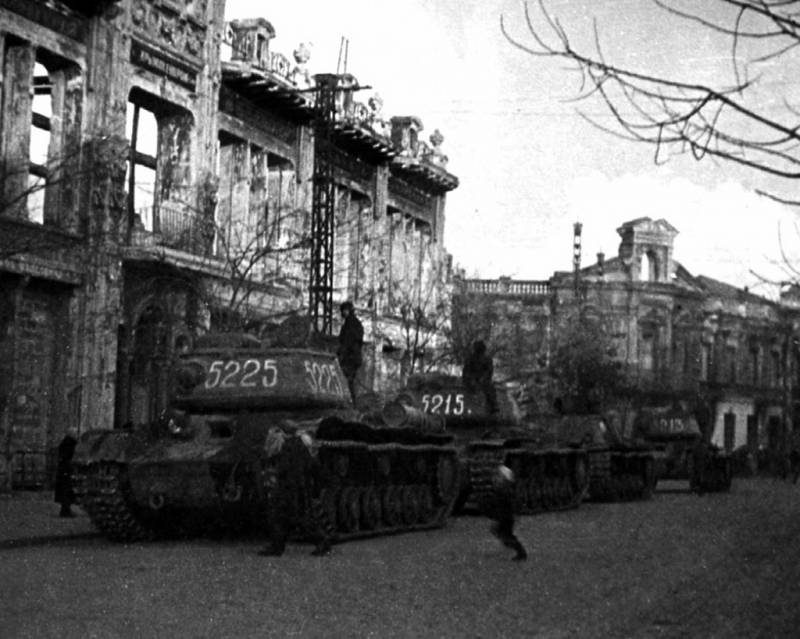
Information